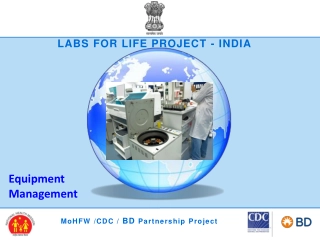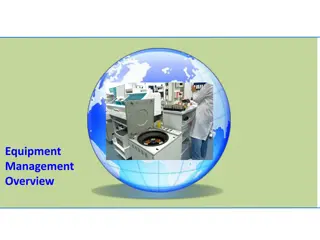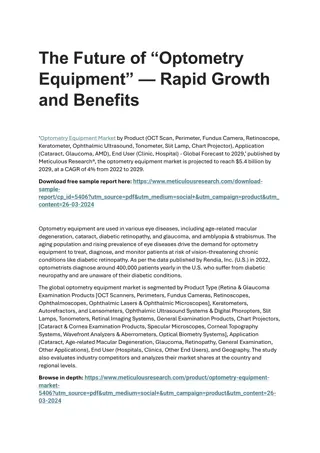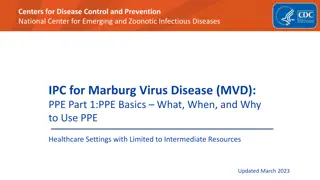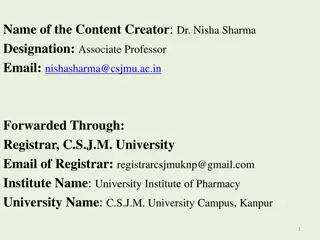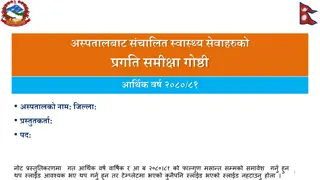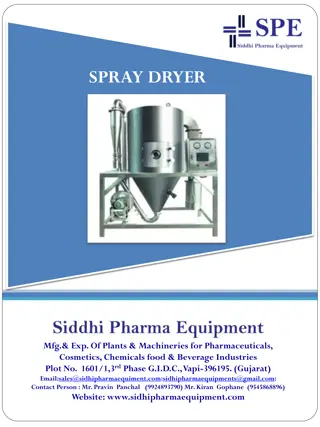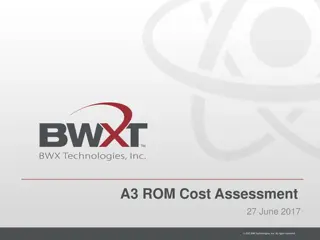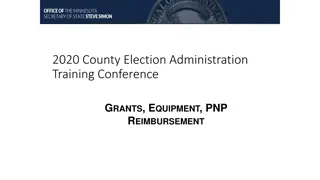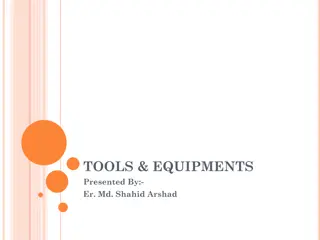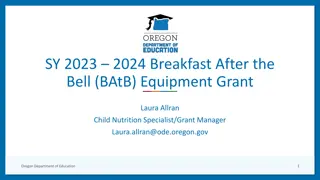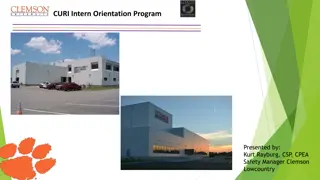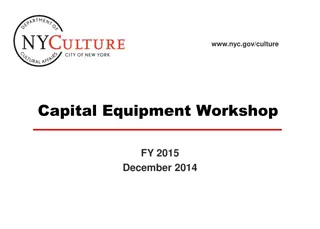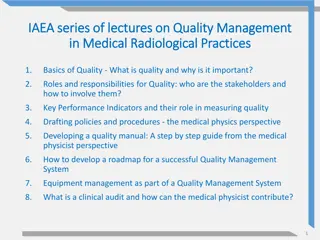
Personal Equipment Care Guide
Learn how to maintain and organize your personal healthcare equipment for efficient use during clinical visits. Proper care and cleaning tips included to ensure optimal performance. Essential items highlighted in red must be carried to each visit for patient care.
Download Presentation

Please find below an Image/Link to download the presentation.
The content on the website is provided AS IS for your information and personal use only. It may not be sold, licensed, or shared on other websites without obtaining consent from the author. If you encounter any issues during the download, it is possible that the publisher has removed the file from their server.
You are allowed to download the files provided on this website for personal or commercial use, subject to the condition that they are used lawfully. All files are the property of their respective owners.
The content on the website is provided AS IS for your information and personal use only. It may not be sold, licensed, or shared on other websites without obtaining consent from the author.
E N D
Presentation Transcript
How to look after your Personal Equipment
PORTABLE EQUIPMENT FOR HCAs Equipment highlighted in RED must be taken into each clinical visit Nursing documentation spare core documents Aprons disposable BTB272 0.04 4 Blood Glucose test Strips Via pharmacy 1 pack Blood Glucose unistick lancets Via pharmacy 10 Blood Glucose Machine Via admin 1 Gloves non-sterile See latest nhs supply code 10-15 pairs Hand Gel 3.00 pharmacy 1 Omron fully automatic cuff size (22-42cm) See Latest nhs supply code 1 Tympanic thermometer (annual calibration req d) & sheaths Therm - approx. 25.00 Sheaths 3.25 1 thermometer & 1 box of sheaths Pulse Oximeter See latest nhs supply code 1 Urine test strips a bottle of Pharmacy 7.80 1 Clinell wipes See latest nhs supply code 1 pack Softpore 10x10cm See latest nhs supply code 2 Faecal specimen bottle Via GP 1 Kerra pro 10cm See latest nhs supply code 1 Kerra pro heel pads See latest nhs supply code 2 Kerramax care pad 10cm x 22cm See latest nhs supply code 2 K-Lite bandage 10cm See latest nhs supply code 2 Moisturiser Hand Medic (single person) See latest nhs supply code 1 Mouth resus-aid See latest nhs supply code 1 Atrauman 7.5 x 10cm See latest nhs supply code 2 Needles: green (for taking catheter specimens of urine) See latest nhs supply code 3 Saline sterile for wound care 0.63 - pharmacy 3 x 20ml Sharps bin See latest nhs supply code 1 Soap mild-Gojo (single person) See latest nhs supply code 1 sterile dressing pack See latest nhs supply code 2 Sterile Scissors FGP170 3.08 2 Surgical Adhesive Tape See latest nhs supply code 2.5cm x 1 Syringes (for taking catheter specimens of urine) See latest nhs supply code 3 x 1ml Torch & spare battery Torch x 1 1 in car Urine Specimen bottle Via GP 2 of each Wound swab Via GP 2 Modular foam cushion To carry in car from Peripheral Stores 1 Repose foot protector To carry in car from Peripheral Stores 1
-You will be provided with a bag by your team, this is a contents list. -Everything highlighted in red must be carried into your visits to patients and includes observations equipment, hand gel etc. -Your team will provide you with a blood pressure machine, blood glucose machine, pulse oximeter and thermometer, these will be datixed with the serial numbers in the team's equipment list and you will be responsible for looking after them. -The Equipment is calibrated annually to ensure the equipment is working correctly and this will be your BP machine, pulse oximeter and thermometer and each piece of equipment will have a date with when that piece of equipment requires servicing, and this is usually arranged by the team administrator/manager. -Your equipment should be cleaned with cliniwipes after each patient use so you should ensure they are cleaned for infection control.
-Your teams stores will have the majority of you items you require, and the team regularly order items from stores to keep it well stocked. -It is advised to carry a foam cushion and repose foot protector; this saves any delay in patients receiving equipment. You must then re-stock once you have allocated it to patient and inform your team administrator so they can re-order further supplies against the patient's name. -The recommended amounts are also on the list as you do not want to carry too much as you must think about how much you are carrying and the expiry dates of some of the items. -Wound swabs, some GP practices use different swabs so you must make sure you are aware of your surgeries you cover and what they use. -Carry some spare batteries for your equipment. -Also make sure you carry some spare paperwork; we are moving towards electronic records, but some patients will still have some paper records.
-Blood glucose machines requires to be calibrated daily, each team will have control solutions, they should be in date, and you need to check how long the solution has been opened so this should be recorded on the box. -You need to test the target blood glucose range for the solutions to check they are working correctly and keep a record of your calibration dates and results. -When you have completed your shift, your equipment should be taken into your home and not left in the vehicle as staff have had vehicle thefts, and also the temperature with the weather effects the equipment. -Also, equipment has been condemned due to smoke damage which results to a cost for the trust but also it is not appropriate for patient care using equipment that can smell of cigarettes. -Any dressings or anything with an expiry date needs to be checked regular to ensure they are in date.
-The Equipment is calibrated annually to ensure the equipment is working correctly and this will be your BP machine, pulse oximeter and thermometer and each piece of equipment will have a date with when that piece of equipment requires servicing, and this is usually arranged by the team administrator/manager. -Your equipment should be cleaned with cliniwipes after each patient use.

